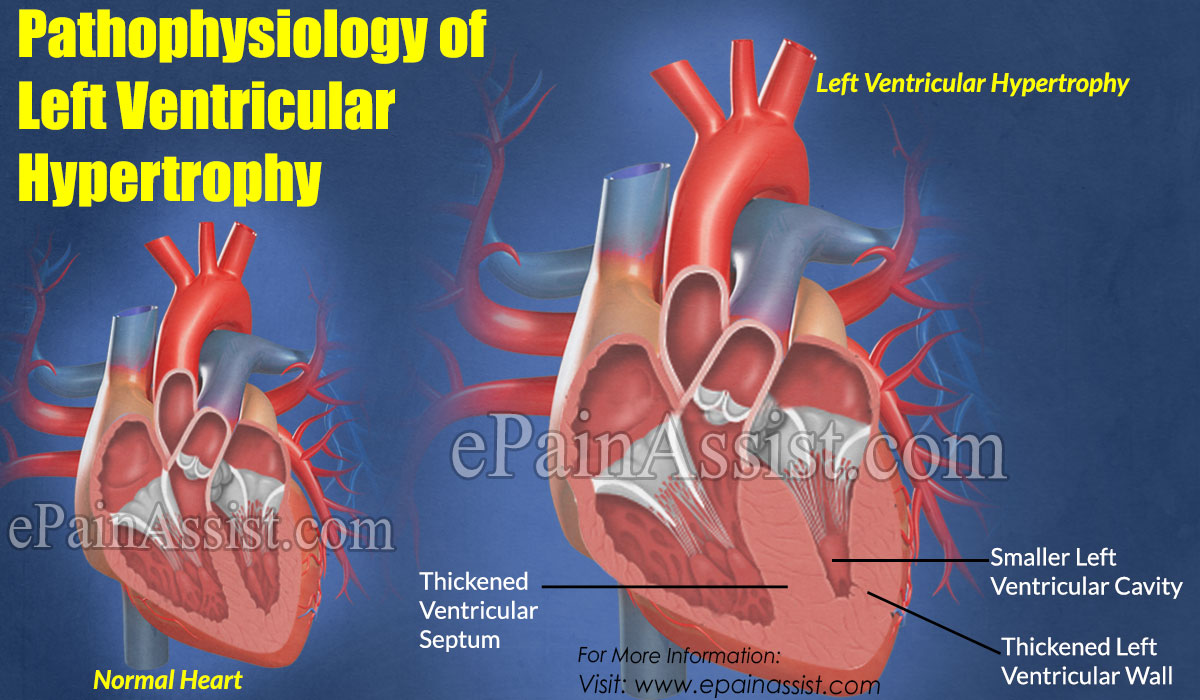Is Left Ventricular Hypertrophy a Heart Attack?
Left ventricular hypertrophy is not a heart attack. Left ventricular hypertrophy occurs when the left ventricle muscle wall gets thicker and loose its elasticity and enlarge the heart. It’s hard for a thick muscle to get an adequate blood supply, which leads to ischemia of the muscles. If this process continues, it causes death of the muscles which is a heart attack. So, LVH is one of the causes for getting a heart attack. Even though the symptoms of heart attack and LVH are similar it’s not a heart attack.
Structure and Function of the Heart
First we will talk about how left ventricular hypertrophy (LVH) develop and the basic structure of the heart. This will help you to understand whether left ventricular hypertrophy is a heart attack or not.

The heart has four chambers (when you see a cut open section of the heart) which are divided into left and right namely right atria, right ventricle, left atria and left ventricle. The right and left is divided by mass of heart muscle which is called the septum. The atrium and ventricles are divided on the right by a tricuspid valve (it has 3 valves) and on the left by mitral valve (it has two cusps).
The pathway the blood flows through the heart, deoxygenated blood (blue color blood in the diagram) comes through the large veins enters the right atria, then thorough the tricuspid valve goes to the right ventricle then blood is pushed out to the pulmonary artery (the blue blood vessel) through the pulmonary valve, which is the artery that carries deoxygenated blood to the lungs to get oxygenated.
Then, the oxygenated blood through the pulmonary veins comes to the left atrium. Then, through the mitral valve it come to the left ventricle and then blood is pushed to the aorta (large artery taking blood out of the heart) through the aortic valve. This blood is distributed throughout the body.
The muscle wall thickness is more in the ventricles than the atriums (see the diagram) as ventricles push blood out of the heart, which needs more force. From the ventricles, also left ventricle muscle wall thickness is high compared to right ventricle because the left ventricle supplies blood to the whole body, which need more force to push the blood out.
Blood supply to the heart also originates at the beginning of the aorta, there are three small cusps on the wall of the aorta just after the aortic valve. From these cusps two main branches arise, which are called left coronary artery and right coronary artery. These two main arteries branches out and supply blood to the heart muscle.
Pathophysiology of Left Ventricular Hypertrophy
Left ventricular hypertrophy occurs when the workload on the heart increase. Then, the heart (left ventricle) has to work harder to eject the normal amount of blood that usually ejected in one cycle. To adapt to the increase workload left ventricle wall muscle increase and thickens, loses the elasticity, this causes heart to enlarge. Because of the increased thickness, blood supply to the muscle itself may become inadequate. Then, the muscle will not function properly and the blood ejaculation will be inadequate and the heart will also receive less blood for tissue function. It’s a vicious cycle. When this goes on for some time this can lead to cardiac ischemia (not enough blood and oxygen at tissue level), then if the process continues it can cause death of the cardiac muscle cells, which is called myocardial ischemia (heart attack) or it can lead to heart failure.

Is It a Heart Attack?
Now, you can understand that left ventricular hypertrophy is not a heart attack, but if left ventricular hypertrophy continues undetected, it can lead to cardiac ischemia and the eventually the death of the heart cells which is a heart attack. Left ventricular hypertrophy is one of the causes of heart attack. However, the symptoms of left ventricular hypertrophy and heart attack can be similar like left side chest pain, dizziness, shortness of breath, and dizziness. If you get these symptoms most probably you are either in a heart attack or almost closer to get a heart attack because in the early stages of left ventricular hypertrophy there will be no clinical symptoms.
Also Read:
